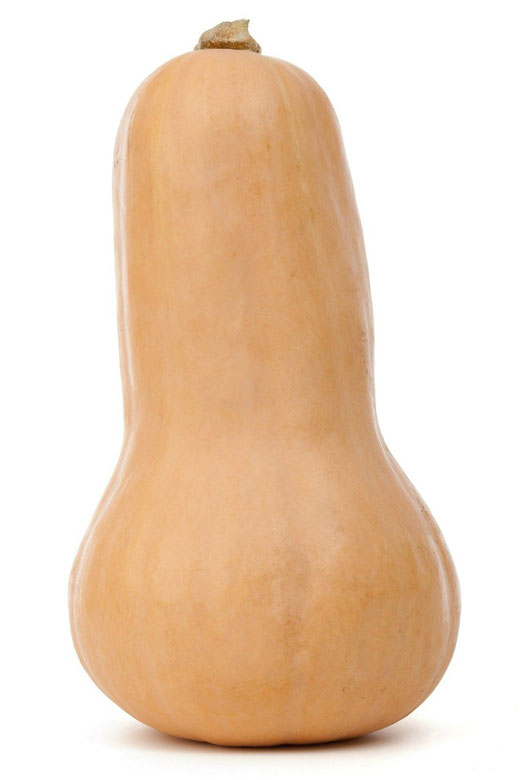Butternut squash is one of my favorites, but its trendiness since the 90s may have done more harm than good. Too often, restaurants and manufacturers freeze, boil, and puree butternut into oblivion, then shove it into soups and raviolis like so much baby food. It’s squash abuse, and we’re all victims.

Since the 1990s, butternut squash has traced a grand path through the western culinary world, from novelty to foodie favorite to overused same-old thing. From my work with farmers and gardeners in Africa and Asia, I can attest that butternut squash has become globally loved, producing a bountiful, dependable harvest in dozens of tropical countries. In Kenya, it’s so dominant that you’ll hear squash generically referred to as “butternuts.”
Butternut Squash Nutrition
In more impoverished regions, but truly for anybody anywhere, such a good source of Vitamin A, C, and beta-carotene is a blessing indeed (59% of your daily Vitamin A in one cup and a dozen different carotenoids!).
Delicious and Convenient
Although butternut has become widely known and therefore a bit mundane, I’m not here to tell you to stop enjoying it. It’s the main squash I grow, mostly for reasons of pest and disease resistance, but also because it’s delicious, if done well.
Perhaps the butternut’s convenience to chefs and cooks is what drove its rise to prominence. Unlike many winter squash, butternut is completely lacking in pebbly bumps or deep ridges, and has a small seed cavity set in the bulbous blossom end of the fruit. The other (stem) end offers a long, thick expanse of easily-peeled deep orange goodness. Recipes can tell us to “peel, cut, seed, and cube a butternut squash” and we’re off to the races. Tell home cooks to peel an acorn squash and get ready for lawsuits: this task is at best tedious and at worst dangerous. But butternut is quick to prep and generous in yield.
Butternut squash can be a transcendent eating experience, depending on how it is grown, stored, and cooked. A good Waltham Butternut, stored for a couple of months, and cooked using dry, high heat, needs nothing else upon it to enter your mouth and bring tears of joy to your eyes. Follow my baked squash master recipe and let me know what you think. Or, bake a fantastic butternut and apple pie or a fragrant spiced squash stew.
But first, shop carefully. Butternuts are lately being bred for farmers to get maximum poundage per acre, and I’ve noticed the size in grocery stores has grown to double or triple what it used to be. Bigger isn’t usually better. This isn’t true for all foods but the biology of how squash grows does suggest a good chance that bigger will be blander. Opt for the smaller butternuts on the shelf, eat from your own garden, or buy from a local farmer who’s choosing varieties for flavor.
Honeynut Squash
Honeynut is a small variety of butternut that is now trendy in part due to star power—its origin is in a discussion between Dan Barber, an often-filmed and cited chef, and a Cornell breeder. Honeynut’s skin is a little darker than Waltham’s with striations. Unlike butternut, it is a dark green when unripe, and some of this green coloring may persist into. I’ve tasted it but not grown it myself. It is delicious and worth seeking out, though pretty similar to a good butternut. The seed has become fairly widely offered in the last year or two.

Comments are closed.